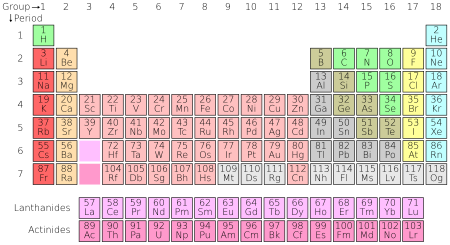IONIC BONDING
- Chemical Bond formed between 2 oppositely charged ions by the transfer of electrons.
- Involves a metal and a non metal element
- The farther two elements are across the periodic table; the more likely they are to form an ionic compound
Sodium (on the left) loses its one valence electron to chlorine who has 7 valence electrons (on the right),
The Result is..
A positively charged sodium ion (left) and a negatively charged chlorine ion (right).
NOTE: Chlorine became negatively charged because it gained an electron which has a negative charge. And Sodium became postively charged because it has more protons+ than electrons-
ILLUSTRATION
USING LEWIS ELECTRON DOT SYSTEM
Element Pair
Lithium has 2 valence electrons .

Chlorine has 7 valence electrons
Electron Transfer

Lewis Structure

The Ionic Compound

Covalent Bonding
Sharing of one or more pairs of electrons between atoms, in order to produce a mutual attraction
Covalent bonding occurs because the atoms in the compound have a similar tendency for electrons (generally to gain electrons).
This most commonly occurs when two nonmetals bond together. Because both of the nonmetals will want to gain electrons, the elements involved will share electrons in an effort to fill their valence shells
Neither atom completely loses or gains electrons as in ionic bonding
There are two types of covalent bonding:
1. Non-polar bonding
2. Polar bonding
Nonpolar Covalent Bonding
A nonpolar covalent bond is formed when an element has an equal attraction or affinity for electrons
It is also formed whenever two atoms of the same element bond together.
The H2 molecule is a good example of the first type of covalent bond, the non-polar bond.
Polar Covalent Bonding
When electrons are unequally shared between two atoms, a polar covalent bond is formed
it also occurs when one atom has a stronger affinity for electrons than the other.- A good example of a polar covalent bond is the hydrogen-oxygen bond in the water molecule.
IMPORTANT TERMS!!
- Single covalent bondIt is the sharing of a single pair of electron between bonded atoms.
- Double covalent bondShares 2 electron pairs
- Triple covalent bondShares 3 electron pairs
- Bonding electronsElectrons shared between the 2 atoms
- Lone PairsValence electron pairs that are not involved in bonding
GROUP 8
CHUA
CORNELIO
DUMPIT
CATAPANG
CARBONEL




























